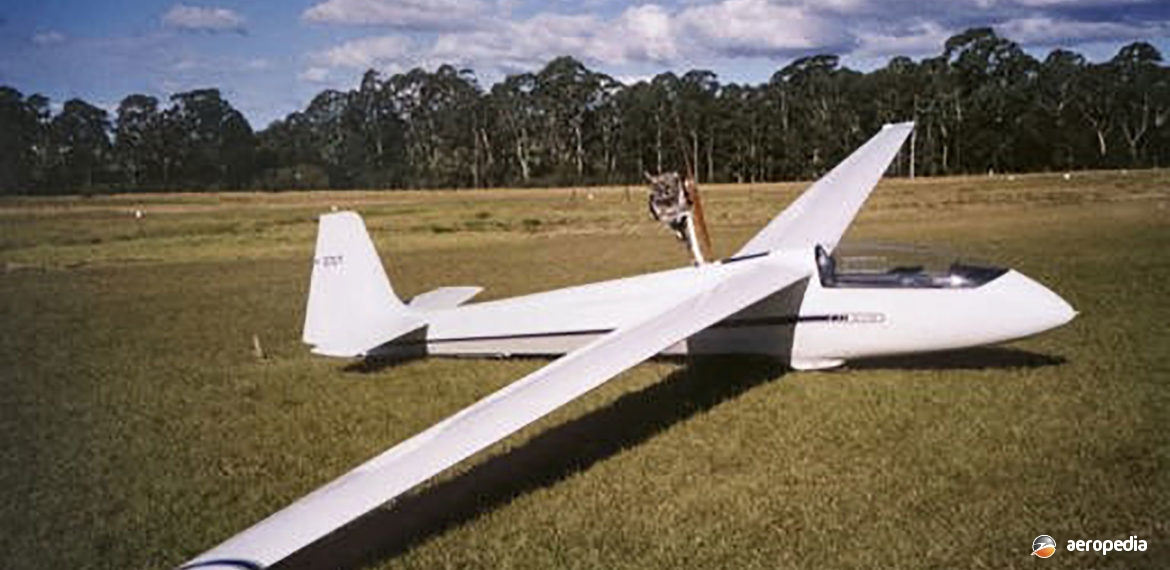Photograph:
Scheibe SF-27MA Zugvogel V VH-ZOT (c/n 6321) in 1999 (David C Eyre)
Country of origin:
Germany
Description:
Self-launched glider
Power Plant:
One 19 kw (26 hp) Hirth F-102 A2 two-cylinder two-stroke air-cooled engine
Specifications:
- Wingspan: 15 m (49 ft 3 in)
- Wing area: 12.0 m² (129.2 sq ft)
- Aspect ratio: 8.7
- Stalling speed: 55 km/h (34 mph)
- Max glide ratio: 34:1 at 88 km/h (55 mph)
- Rate of sink at 74 km/h (46 mph): 38 m/min (126 ft/min)
- Empty weight: 210 kg (463 lb)
- Payload: 115 kg (254 lb)
- Loaded weight: 320 kg (706 lb)
- Wing loading: 26.67 kg/sq m² (5.42 lb/sq ft)
History:
This series of gliders was introduced to the Company’s range in 1964, being a development of the earlier Zugvogel and SF-26, the SF-27A being a Standard Class design for competition. Construction was of steel tube with a fibreglass nose section, an all-flying tail, Schempp-Hirth type dive brakes and semi-reclining seating.
The SF-27M was a self-launched version fitted with a two-cylinder two-stroke Hirth engine and propeller mounted on a retractable pylon behind the cockpit. The aircraft was named Zugvogel, which is a migratory bird, and is a single-seat glider. It is a shoulder-wing aircraft, the wing being covered in ply over the outer part, with the inner section covered with ply from the leading edge to behind the spar, the remainder a mixture of plywood and fabric. The prototype first flew on 12 May 1964 and approximately 120 examples were completed.
A number of examples have been registered in Australia and New Zealand, including the Model SF-27MA, VH-XOE (c/n 6312) and VH-GYX (c/n 6322). Others registered in this region were ZK-GOT (c/n 6321 – ex N80AR, D-KHEM) which was exported to Australia and became VH-ZOT, which was fitted with a Hirth Motoren KG F10 K19 engine; and ZK-GOU (c/n 6326 – ex N 54175, D-KHOD) which also was exported to Australia and became VH-ZAA.

